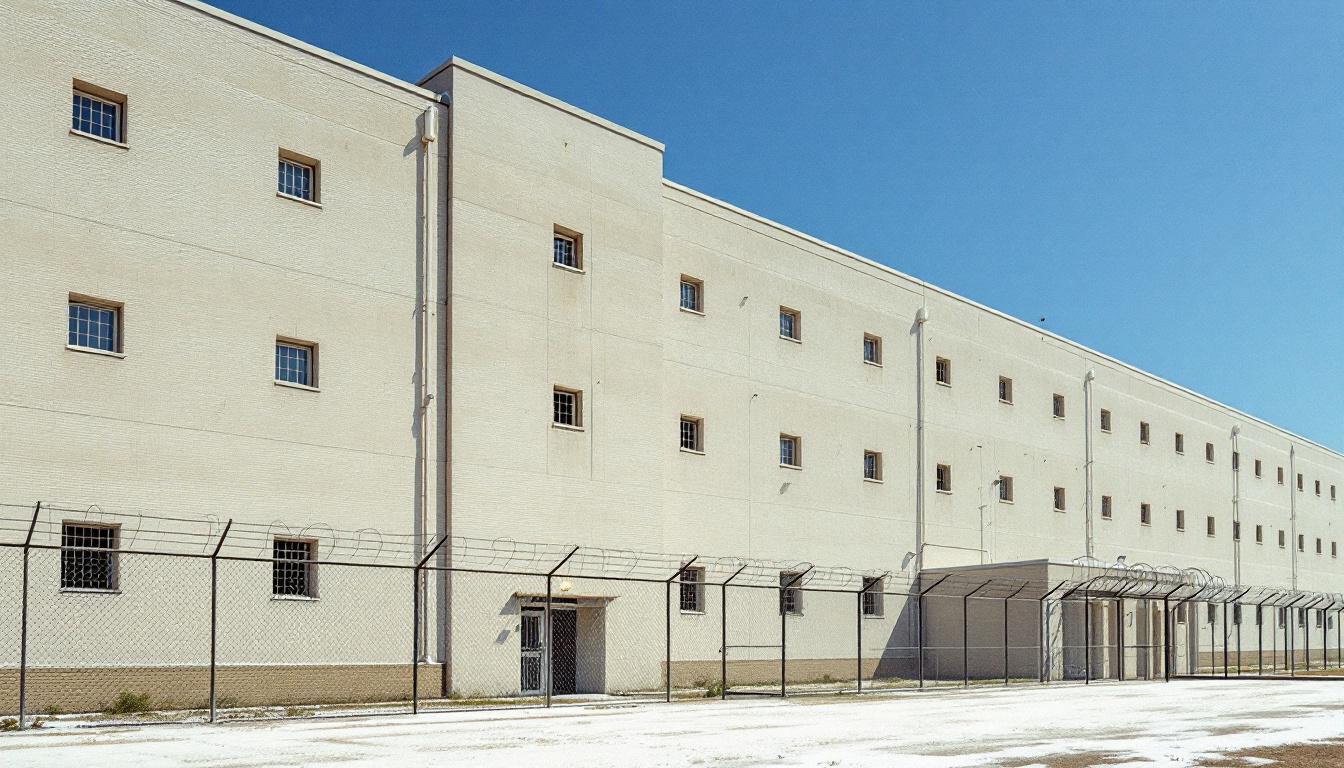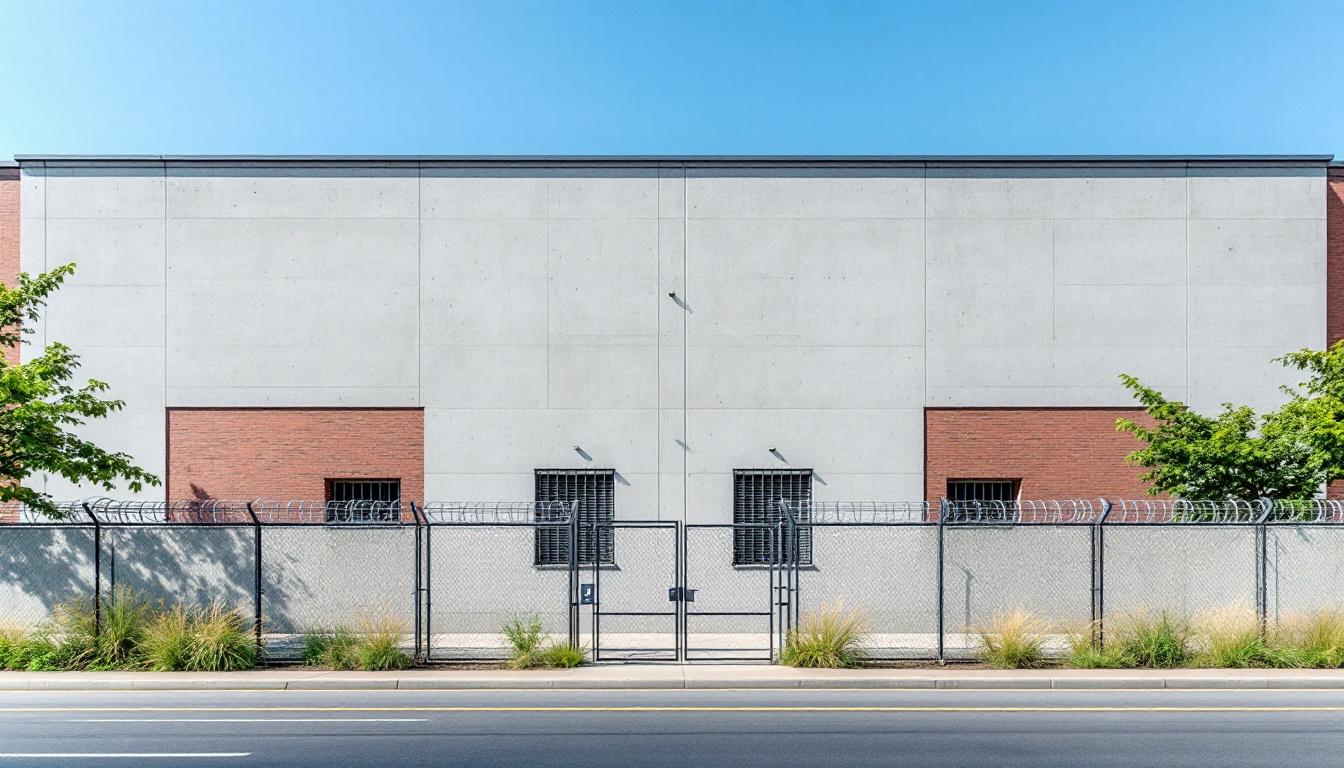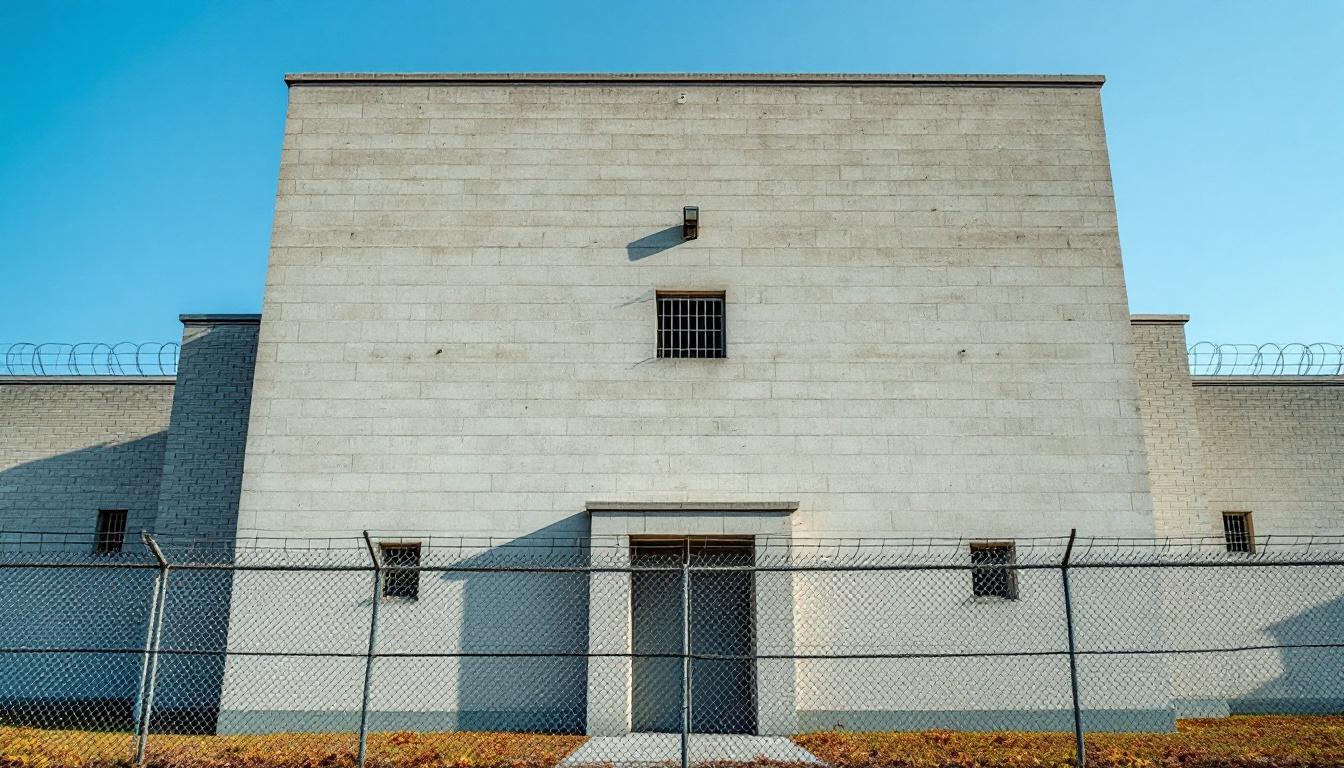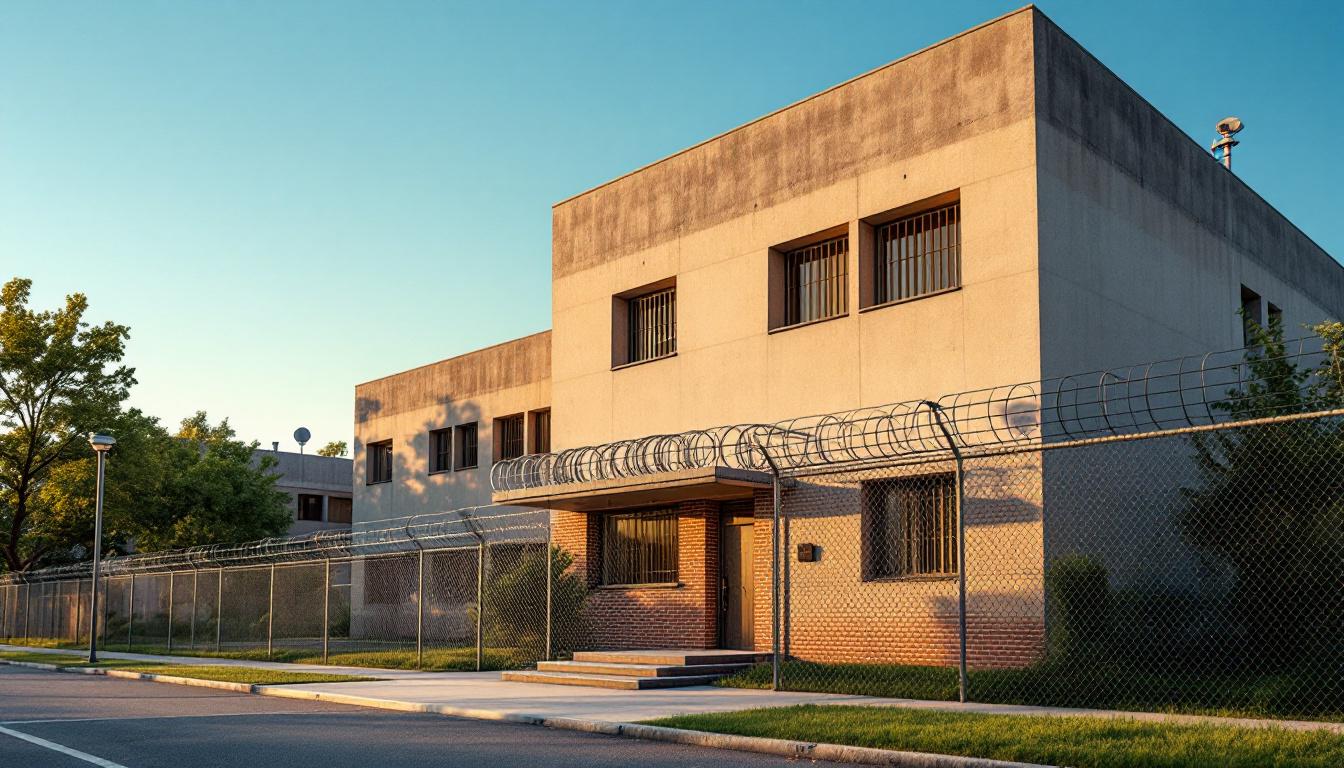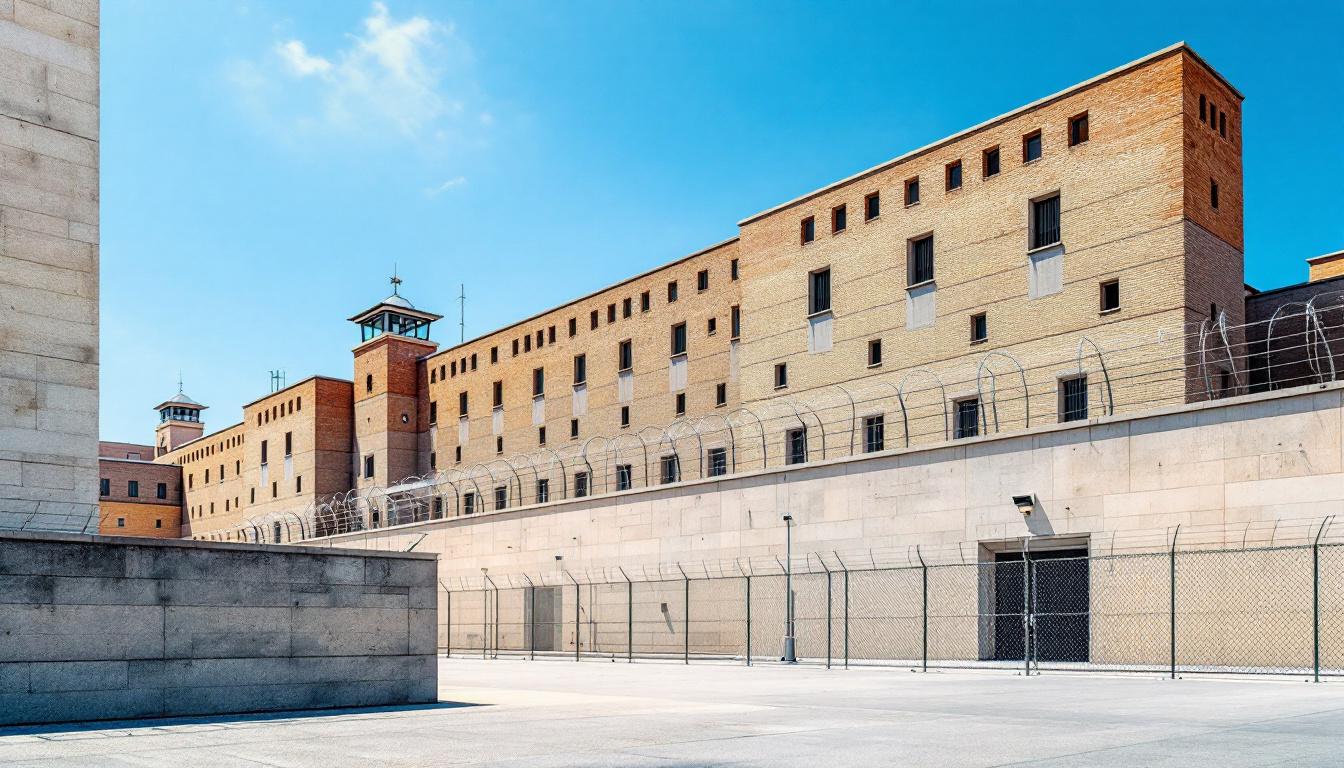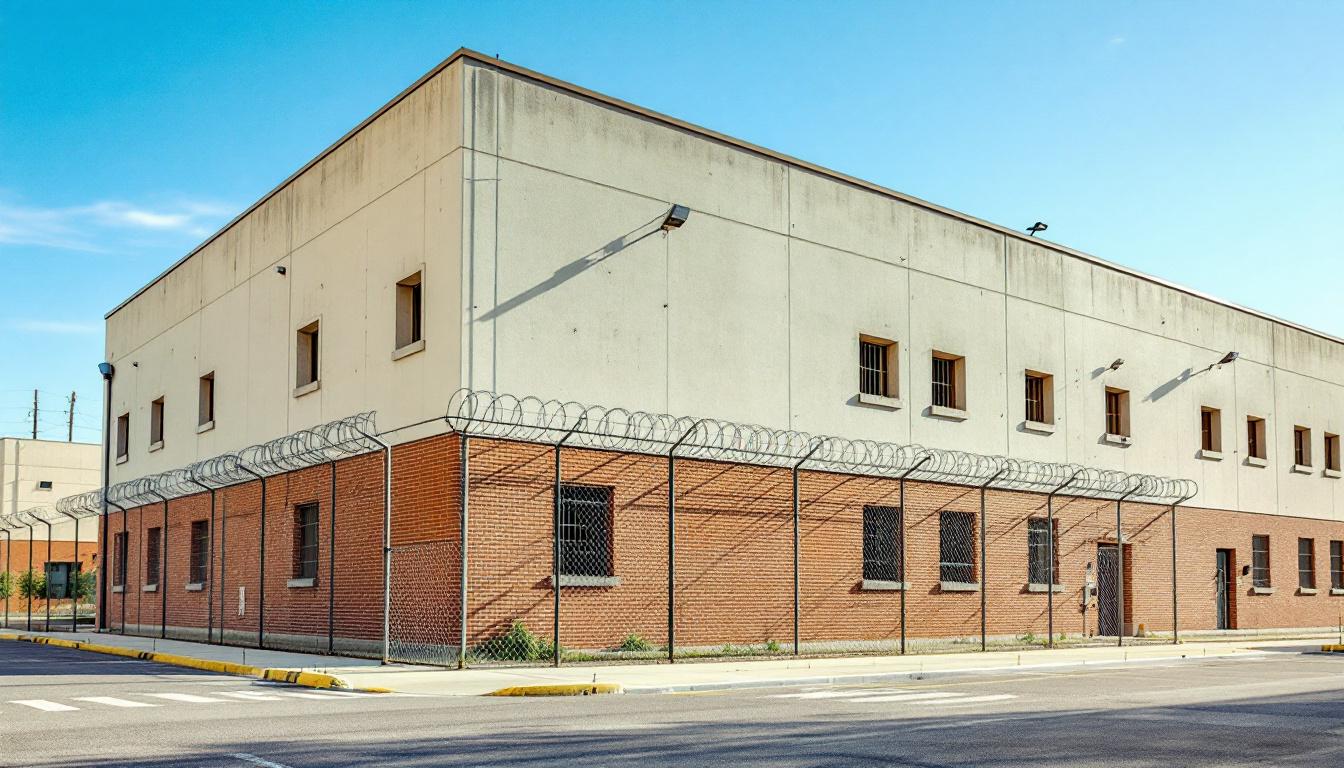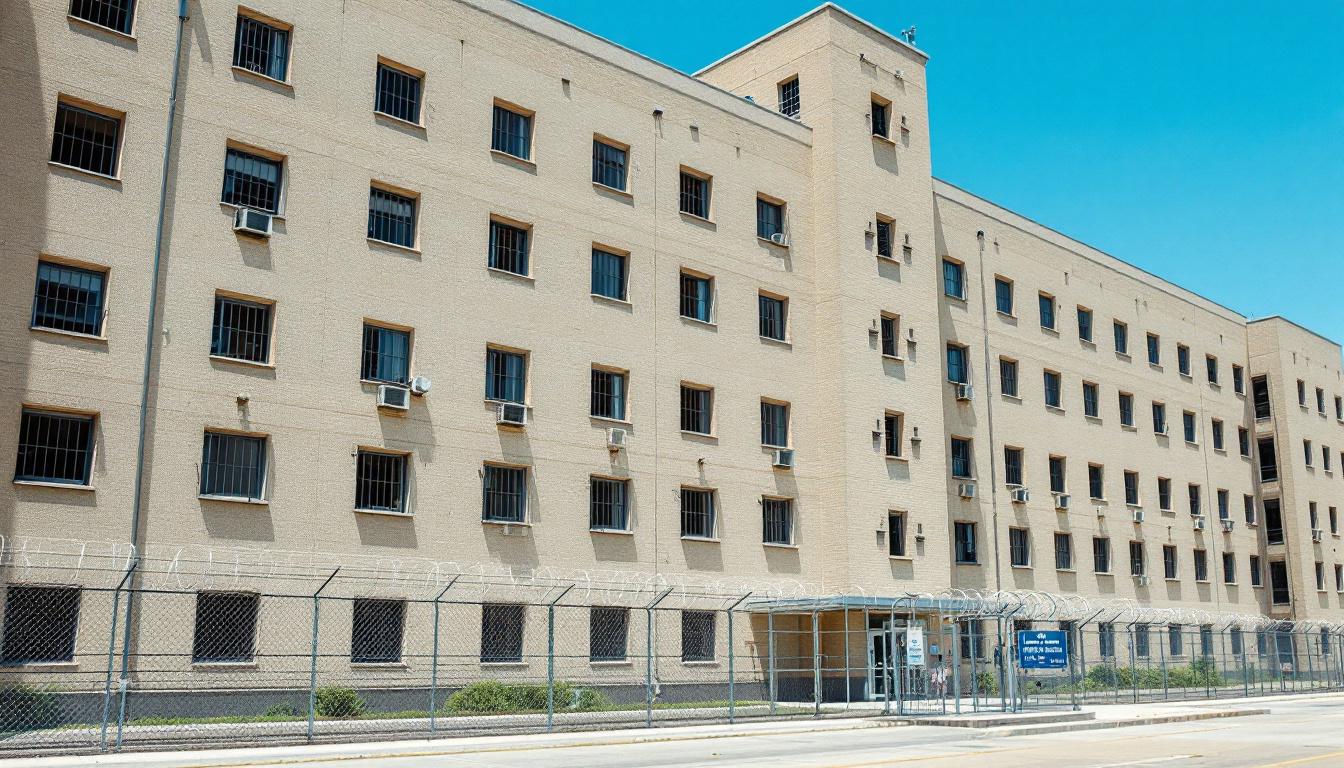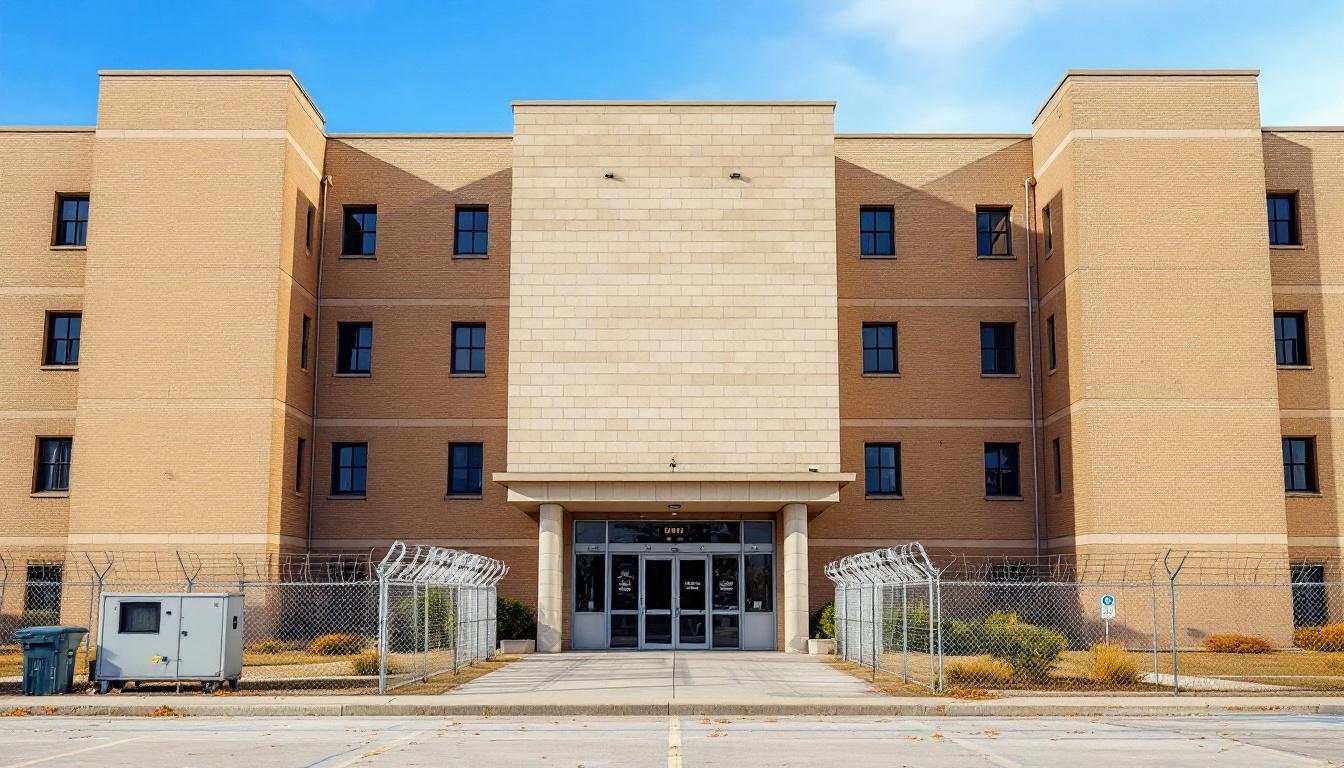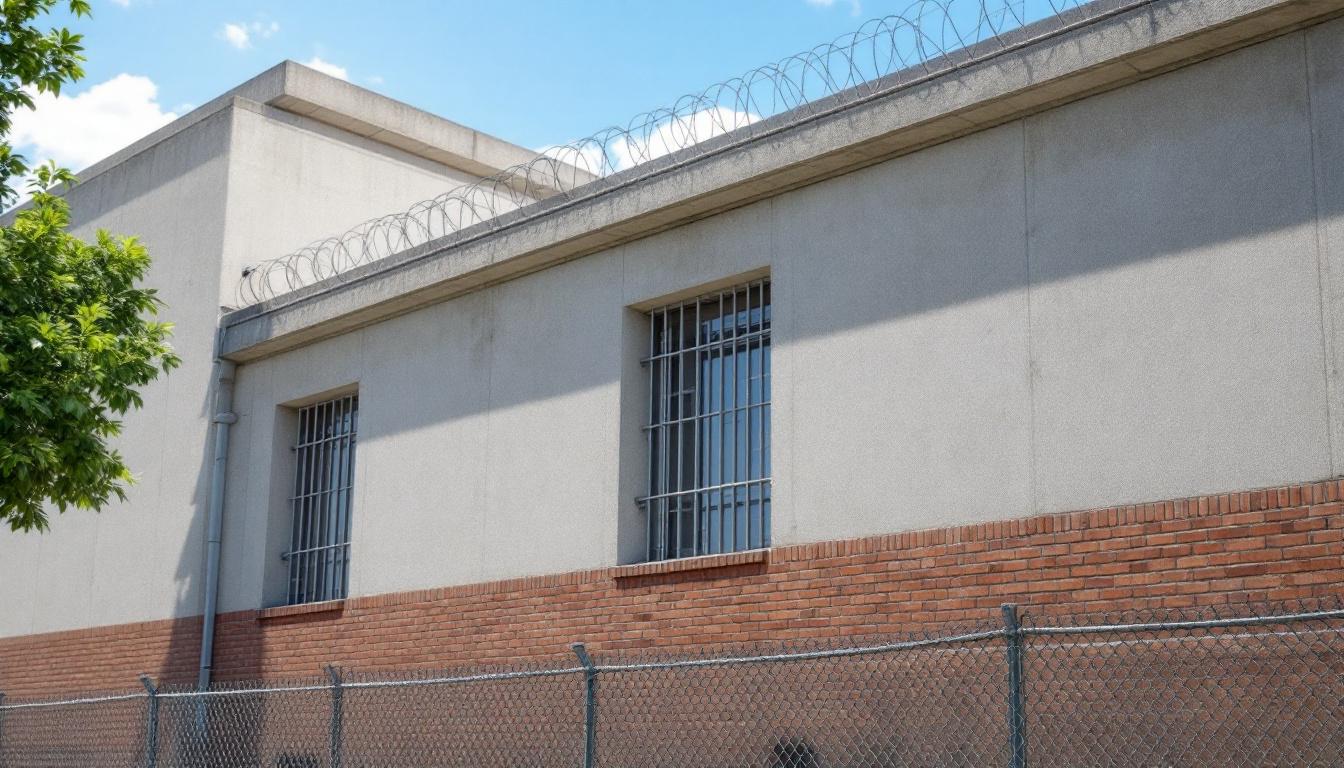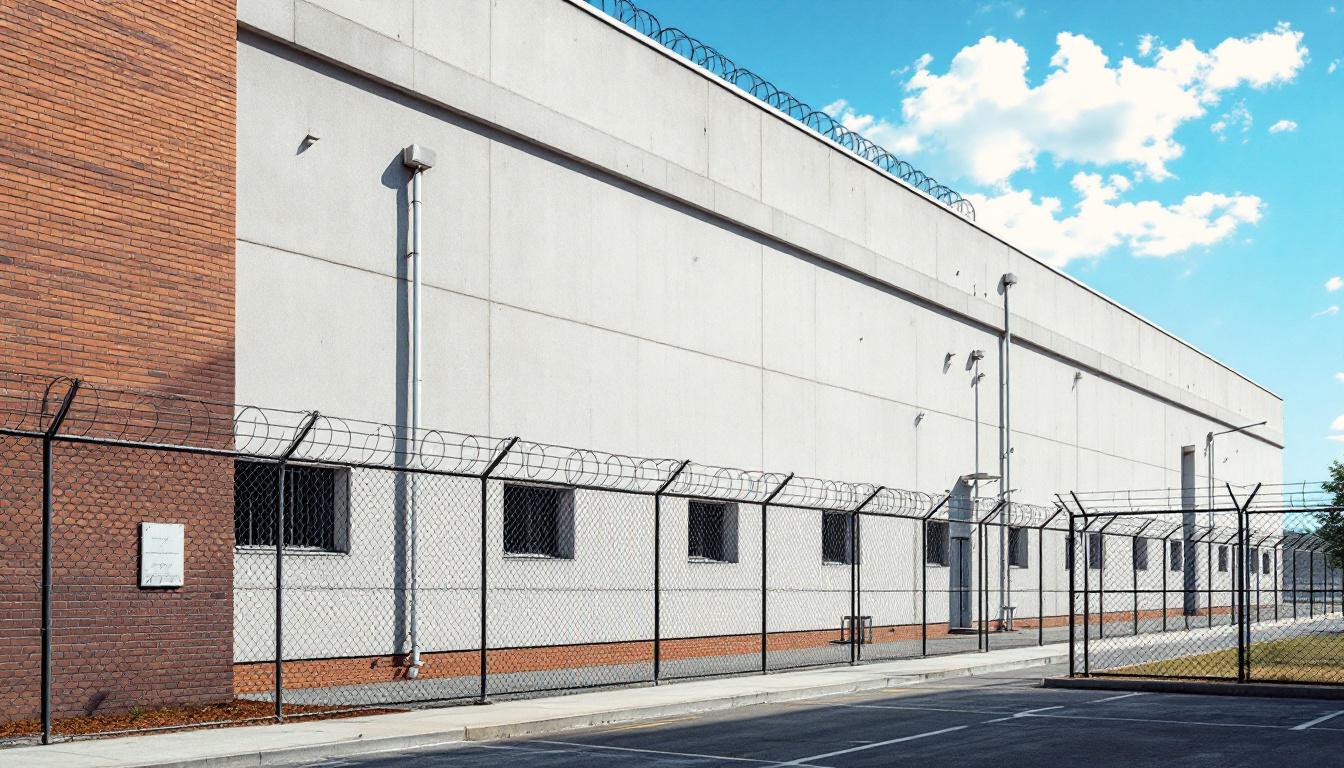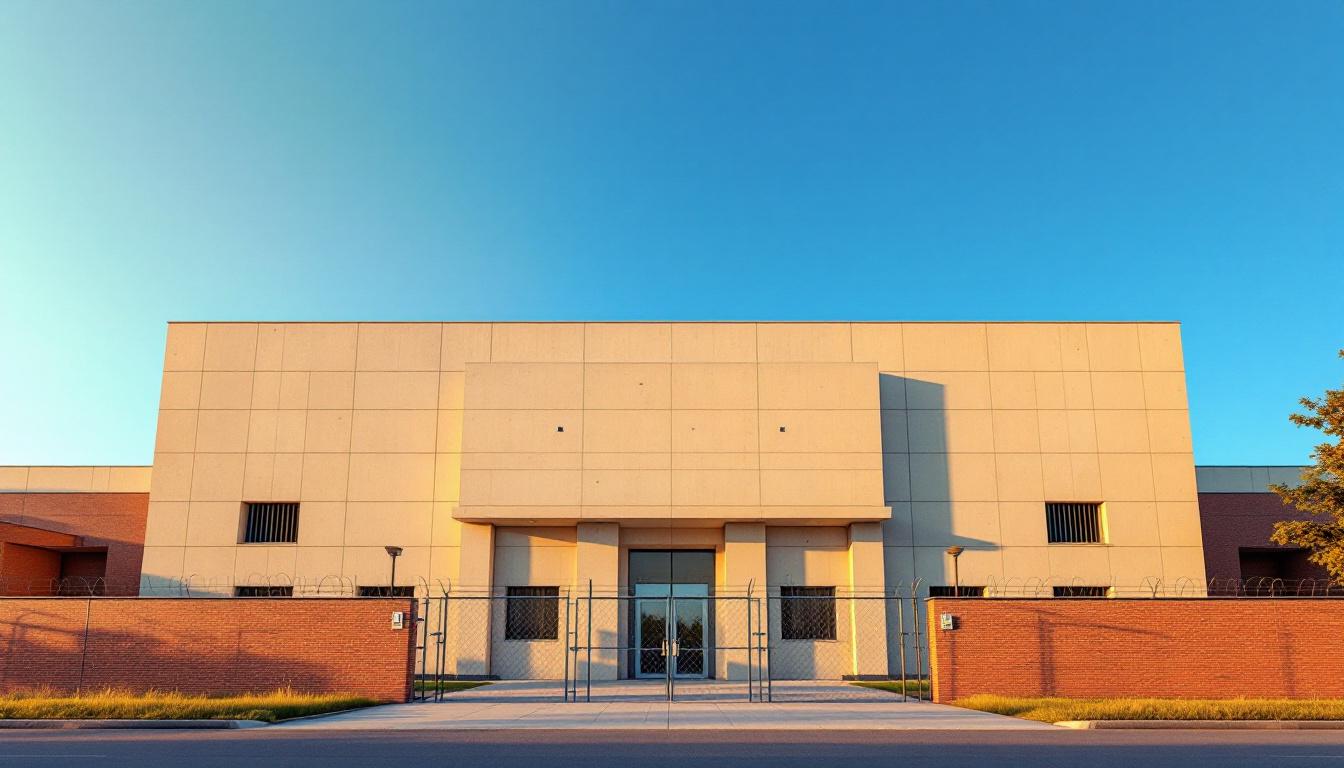
Quick Navigation
How to contact an inmate at Otay Mesa Detention Center
This comprehensive guide will walk you through how to connect with an inmate at Otay Mesa Detention Center. Follow the steps below to find an inmate and send letters and photos:
- Search for the inmate using our search tool below
- Create your account or log in to Penmate
- Write your message (up to 6,000 characters)
- Send instantly - inmates receive printed copies daily
Find an Inmate
Search for an inmate to start communicating today
Tip: You can search by first name, last name, or inmate ID number
To contact a person at Otay Mesa Detention Center start by searching for the person on the official facility website. Perform a search by following these steps:
- Step 1: Enter their first name and last name into the search form and click "Search"
- Step 2: Locate their inmate record
- Step 3: Write down their Inmate ID and any housing information provided
Important! Be sure to enter the person's full name. Nicknames should not be used.
How to Send Messages to Inmates

You can use your phone or computer to send emails, letters, and photos to an inmate. Messages are sent electronically to inmate tablets or kiosks at the facility. If you would like to send a message, start by searching for an inmate at Otay Mesa Detention Center.
Sending Photos and Postcards

A great way to send love and support to a loved one at Otay Mesa Detention Center is to send photos and postcards. It only takes a few minutes to send photos from your phone and it makes a huge difference. You can also mail postcards with words of support and inspiration, or design your own postcard for special moments like birthdays and holidays.
Important! Be sure not to send any explicit photos or they may not be approved by the facility. You can also use a photo printing app like Penmate to make sure your photos are printed at the correct size (4x6 or 3x5) and are mailed according to the rules and regulations of Otay Mesa Detention Center.
Frequently asked questions about Otay Mesa Detention Center
-
How long does it take to deliver a message?
If you're sending an email message your letter is usually delivered within 24-48 hours. For messages sent via mail you should expect delivery within 3-7 days. All messages will need be approved by Otay Mesa Detention Center.
-
How much does it cost to send a message to Otay Mesa Detention Center?
You can send a message free using your phone or mail a message via USPS for the price of a $0.60 stamp and envelope. You can also purchase credits or e-stamps from services starting at $1.99.
-
What services can I use to contact an inmate at Otay Mesa Detention Center?
Penmate
You can use Penmate to send letters and photos to an inmate from your phone. It's an easy way to stay in touch during your loved one's incarceration. Use the inmate locator to find an inmate's location and contact information, then you can send messages within a few minutes.
Securus messaging
Securus may be another option for communicating with an inmate at Otay Mesa Detention Center. You can create a friends and family account and purchase credits to send messages. All messages will be reviewed and must be approved by the facility.
JPay
Some county jails and state prisons may support sending messages with JPay. You must register an account with the system, find your loved one, and purchase stamps to send messages. For some locations you can also attach photos.
Smart Jail Mail
You may also check if Smart Jail Mail is available at Otay Mesa Detention Center. Smart Jail Mail is operated by Smart Communications and has contracted with some state and county jails. After purchasing credits, your messages and photos are sent to the facility, printed out, and then handed out to your loved one.
-
What is the mailing address of Otay Mesa Detention Center?
Mailing address:
Otay Mesa Detention Center
7488 Calzada De La Fuente
San Diego, CA 92231
Phone: (619) 671-8724Business hours:
- Monday: 8:30 AM – 7:00 PM
- Tuesday: 8:30 AM – 7:00 PM
- Wednesday: 8:30 AM – 7:00 PM
- Thursday: 8:30 AM – 7:00 PM
- Friday: 8:30 AM – 7:00 PM
- Saturday: 7:00 AM – 8:00 PM
- Sunday: 7:00 AM – 8:00 PM
-
What are the visiting hours at Otay Mesa Detention Center?
Visiting hours at Otay Mesa Detention Center vary by housing unit and security level. Generally, visits are scheduled on weekends and holidays, with some facilities offering weekday visits. Contact the facility directly at (619) 671-8724 or check their website for the current visiting schedule. Visits typically last 30-60 minutes and must be scheduled in advance.
-
What items are prohibited when sending mail to Otay Mesa Detention Center?
Prohibited items typically include: cash, personal checks, stamps, stickers, glitter, glue, tape, staples, paperclips, polaroid photos, musical or blank greeting cards, hardcover books, magazines with staples, and any items containing metal or electronics. Only send letters on plain white paper with blue or black ink. Photos must be printed on regular photo paper (no Polaroids). Always check with Otay Mesa Detention Center for their specific mail policies.
-
How do I send money to an inmate at Otay Mesa Detention Center?
You can send money to an inmate at Otay Mesa Detention Center through several methods: 1) Online using JPay, Access Corrections, or the facility's approved vendor, 2) Money orders mailed directly to the facility with the inmate's name and ID number, 3) Kiosks located in the facility lobby, or 4) Over the phone using a credit or debit card. Fees vary by method, typically ranging from $2.95 to $11.95 per transaction.
-
Can I schedule a video visit with an inmate at Otay Mesa Detention Center?
Many facilities now offer video visitation as an alternative to in-person visits. At Otay Mesa Detention Center, video visits may be available through services like Penmate, Securus Video Connect, GTL, or ICSolutions. Video visits typically cost $10-20 for 20-30 minutes and must be scheduled in advance. You'll need a computer or smartphone with a camera and reliable internet connection. Contact the facility for their specific video visitation policies and approved vendors.
-
What identification do I need to visit an inmate at Otay Mesa Detention Center?
All visitors must present valid government-issued photo identification such as a driver's license, state ID, passport, or military ID. Minors must be accompanied by a parent or legal guardian who can provide the minor's birth certificate. Some facilities require visitors to be on the inmate's approved visitation list, which may require a background check. Contact Otay Mesa Detention Center for specific ID requirements and visitor approval procedures.
-
How can I find out an inmate's release date?
To find an inmate's release date at Otay Mesa Detention Center, you can: 1) Use the online inmate search tool if available, 2) Call the facility's records department, 3) Contact the inmate's case manager or counselor, or 4) Have the inmate provide this information during a call or visit. For privacy reasons, some facilities only release this information to immediate family members.
Facility Overview
Contact Information
Otay Mesa Detention Center7488 Calzada De La Fuente
San Diego, CA 92231
Phone: (619) 671-8724
Official Website

About Otay Mesa Detention Center
Serving the diverse communities of San Diego through a comprehensive approach to detention and rehabilitation, Otay Mesa Detention Facility, CA operates as a significant component of the region's correctional infrastructure. This CA correctional facility typically emphasizes the dual mission of maintaining secure custody while preparing individuals for successful community reintegration. Located in the Pacific region's dynamic landscape, the facility generally provides various inmate services designed to address both immediate detention needs and longer-term rehabilitation goals.
The detention center commonly offers educational programming, vocational training opportunities, and substance abuse counseling as part of its reintegration focus. Mental health services and medical care are typically available to address the comprehensive needs of the detained population. Programs may include job readiness training, life skills development, and family reunification support services that help strengthen community connections during the detention period. These initiatives often work together to create pathways for individuals to rebuild their lives and contribute positively to San Diego's communities upon release.
Through its commitment to security and rehabilitation, the facility generally maintains structured daily routines that balance supervision requirements with opportunities for personal growth and skill development. The detention center typically coordinates with community organizations and service providers to ensure continuity of care and support networks extend beyond the facility walls. This comprehensive approach to detention operations reflects the broader Pacific region's emphasis on evidence-based practices and community-centered solutions in correctional settings.
Programs & Services
Personal growth and rehabilitation form the cornerstone of service delivery at Otay Mesa Detention Facility, where inmates have access to comprehensive programming designed to address both immediate needs and long-term reintegration goals. The facility typically emphasizes a holistic approach to rehabilitation, recognizing that successful outcomes often depend on addressing multiple aspects of an individual's circumstances. Through structured interventions and skill-building opportunities, inmates may participate in services that focus on developing practical abilities while addressing underlying behavioral patterns that contributed to their incarceration.
Educational initiatives at the facility often include basic literacy programs, GED preparation, and financial literacy courses that help inmates develop essential life skills. These services typically provide foundational knowledge that supports both personal development and future employment prospects. In addition to this educational foundation, vocational training programs may offer hands-on experience in various trades and technical skills. Such training often focuses on industries with strong job markets, helping inmates develop marketable abilities that can facilitate their transition back into the community upon release.
Support services at Otay Mesa typically encompass a range of therapeutic interventions designed to address specific behavioral and psychological needs. Individual counseling services may provide personalized support for inmates dealing with various personal challenges, while cognitive behavioral therapy programs often focus on helping participants develop healthier thought patterns and decision-making skills. In addition to this general therapeutic support, specialized services such as sex offender treatment programs may be available for inmates with specific treatment needs. These rehabilitation programs typically work together to create a comprehensive support system that addresses both the immediate challenges of incarceration and the longer-term goals of successful community reintegration.
Daily Life & Visitation
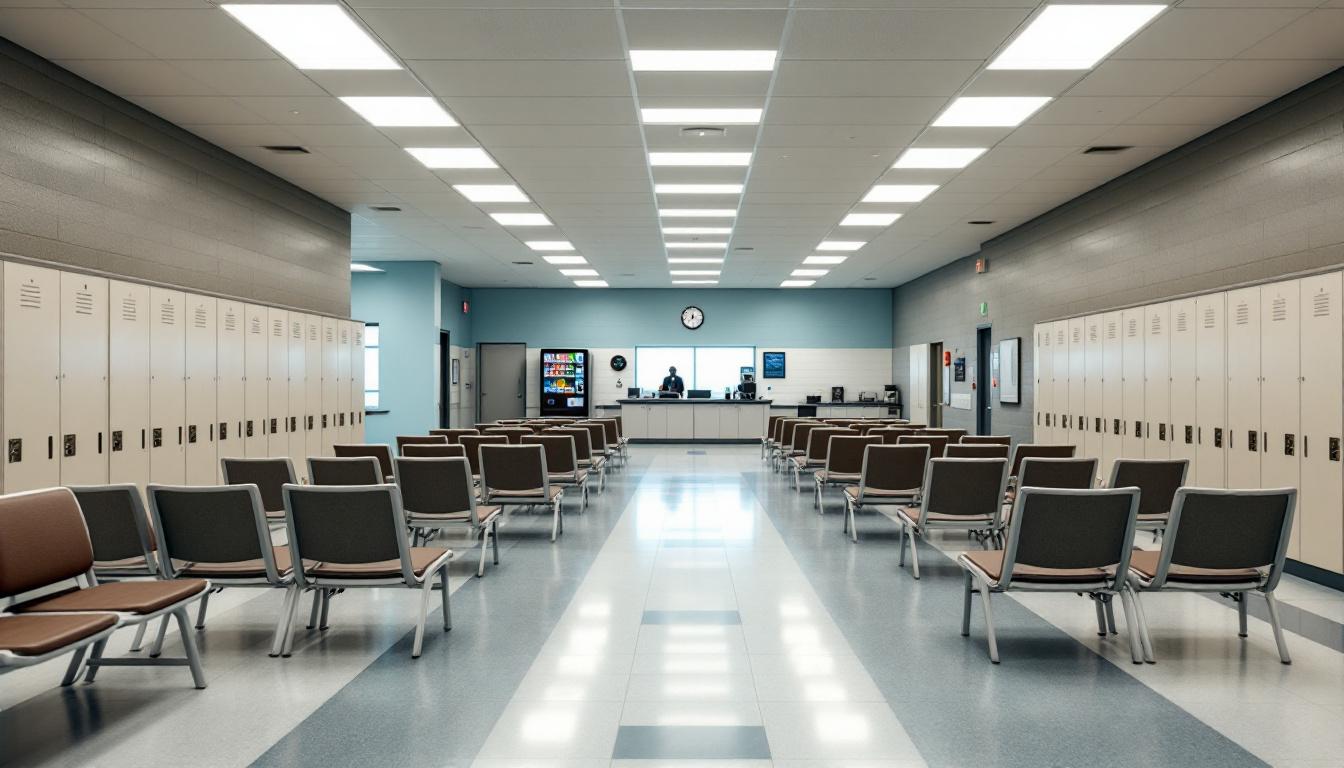
The concrete housing units and controlled environment of Otay Mesa Detention Facility shape every aspect of an inmate's experience. Within these structured surroundings, daily routines currently revolve around scheduled counts, meal times, and supervised activities that continue to provide predictable rhythm to institutional life. Inmates typically wake early for morning count before proceeding to dining areas for breakfast, followed by work assignments or programming activities that may include educational classes or vocational training.
Living accommodations generally consist of shared cells or dormitory-style housing units where inmates adapt to limited personal space and communal living arrangements. Personal property is typically restricted to essential items and approved commissary purchases, encouraging inmates to focus on relationships and daily interactions with fellow residents. The dining experience usually involves scheduled meal times in common areas, where inmates gather for breakfast, lunch, and dinner while following established protocols for movement and seating arrangements.
In addition to this structured routine, recreational opportunities may provide outlets for physical activity and social interaction through gymnasium access, outdoor recreation time, and organized sports when available. Despite this controlled environment, family connections continue through scheduled visitation periods and telephone privileges that help maintain important relationships. Work assignments often include facility maintenance, kitchen duties, and laundry services that provide structure while teaching practical skills, complemented by programming schedules that may offer substance abuse counseling, life skills workshops, and other rehabilitative services designed to support successful reintegration.
Ready to Connect?
Start communicating with your loved one today
Search for an Inmate
